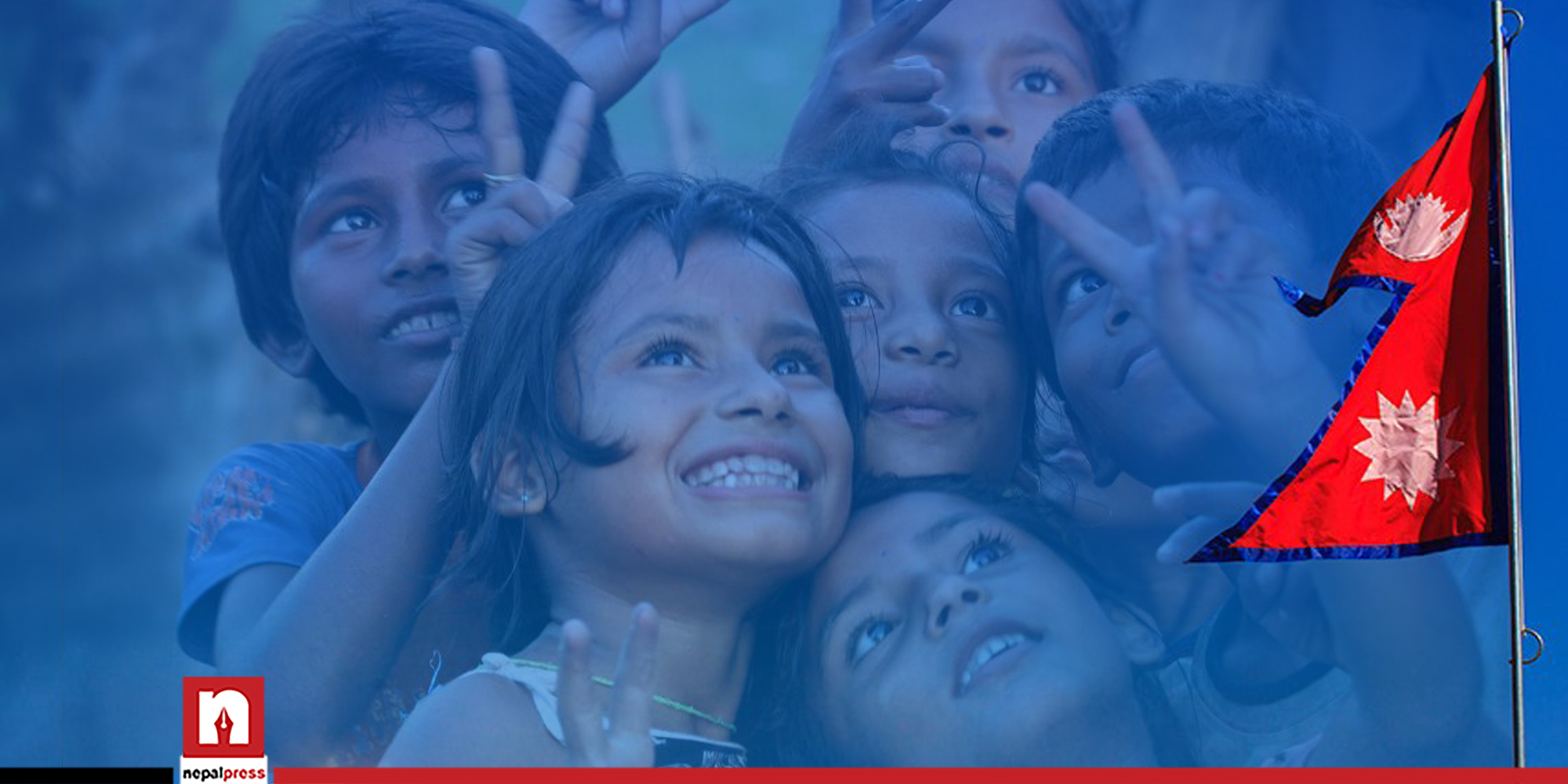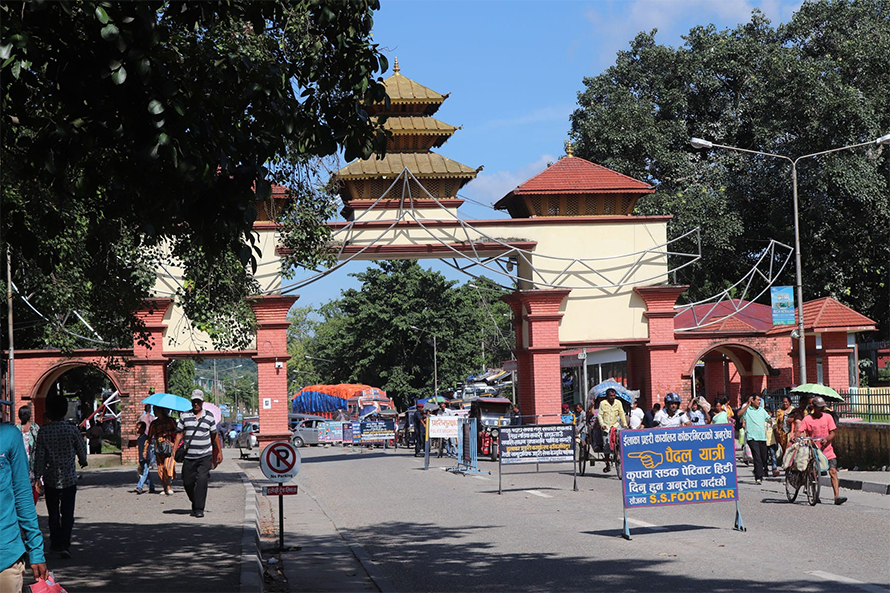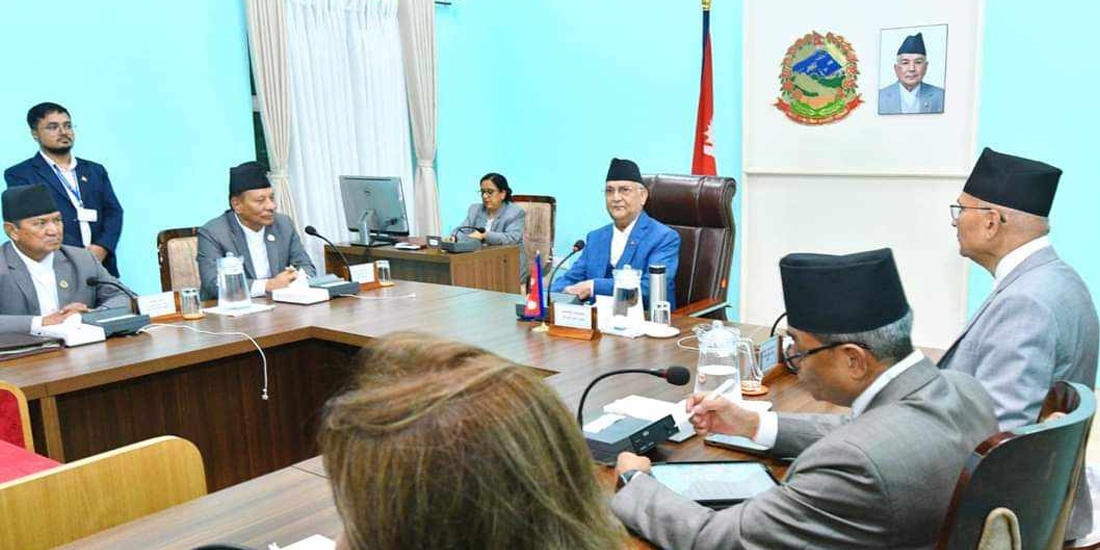Upliftment of national self-esteem amidst a myriad of challenges

Who wants to be known as ‘poor’? Being poor is a constraint, obligation and weakness. If you are financially backward, no matter how much you pretend, society recognizes you as poor and treats you accordingly.
The same trend applies to countries. No country can enjoy the ‘poor’ identity. When the country is not economically prosperous, it cannot effectively position itself on the international field. The powerful nations do not recognize you and even your neighbours will despise you.
In formal language, no country is outright called poor. The United Nations has given the term of identification to the poor, ‘Least Developed Country (LDC)’. In Nepali, we call this ‘developing’, ‘underdeveloped’ or ‘least developed’. Countries with less than average level of development get this tag. The United Nations has divided its member states into three categories based on their socio-economic status. In the classification of the United Nations, Nepal is still an LDC, meaning ‘poor country’. However, it has been decided that Nepal will not remain on the list of LDCs in five years. The United Nations has recommended that Nepal be elevated to a more respectable list of “developing nations”. It will take another five years to implement the recommendations made by the UN Committee for Development Policy. The United Nations has given this time for internal preparations. Normally, three years of preparation time would be given, but Nepal had asked for three more years, citing reasons including the earthquake. The United Nations is ready to add two more years.
It is almost at the same time that Nepal has been recommended for inclusion in the list of developing nations and China has declared itself a poverty-free country. Although there is no direct relationship, this has a symbolic meaning. While neighbouring countries are sending a message to the world that poverty has been eradicated from their country, we are compelled to be excited that we will be removed from this list after five years.
In any case, this is a matter of happiness for Nepalis. It is also historical. The government will certainly interpret the transition from an underdeveloped country to a developing one as an ‘achievement’ of its tenure. Foreign Minister Pradip Gyawali said the recommendation provided great confidence in Nepal’s resolve to become a middle-income country by 2030.
However, many are considering this promotion to be limited paper only. In reality, Nepal’s economic situation has not changed much. Neither development nor construction has made significant leaps. Some things have been done, but people are so upset because of the political turmoil in the country that they have not been able to realize the development that has taken place. The young generation does not have confidence in the future of the country. This is why the upgrade of Nepal from LDC has not attracted much interest or enthusiasm among the people. Even the cadres of the ruling party do not seem to understand this as a great achievement. Otherwise, why would they fail to light candles in Maitighar or exchange laddus, like Prachanda-Madhav?
List of LDCs shortened
According to the UN definition, LDCs are those countries where socio-economic development indicators are weak and human development is low. The list of LDCs was first made public by the United Nations on November 18, 1971. As of December 2020, 46 countries of the world are classified as LDCs. A large portion of this belongs to African nations.
Nine countries in Asia, including Nepal, are on the list. Nepal, Bangladesh, Afghanistan and Bhutan are underdeveloped countries of South Asia.
Of these, Bhutan will be upgraded to the developing list in 2023. This means that Bhutan will be included in the developing list before Nepal. Other South Asian nations – India, Pakistan, Sri Lanka and the Maldives are already in the developing category. Another SAARC nation, Bangladesh, has also been recommended for promotion along with Nepal. Thus, in the next five years, the SAARC region, except Afghanistan, will be excluded from the list of underdeveloped countries.
Between 1994 and 2020, six nations were promoted above the LDCs. Botswana was added to the list in 1994, Cape Verde in 2007, the Maldives in 2011, Samoa in 2014, Guinea in 2017, and Vanuatu in 2020. Along with Bhutan in 2023, Sao Tome and Principe and Solomon Islands will get promotions in 2024.
The United Nations has not made a definition and list of developing and developed nations like the least developed countries. However, countries leading development are considered developed nations and moderately developed countries are considered developing nations.
In general practice, Japan and China in Asia, Israel in the Middle East, Canada and the United States in North America, Australia and New Zealand in Oceania, and Europe as a whole are unofficially recognized as developed countries or regions. These nations are also donors to underdeveloped nations. They set aside a small portion of their budget for underdeveloped nations and provide grants under various headings. There are also concessional loans.
There are no criteria for moving from a developing country to a developed country. Nowadays, the so-called developing nations do not have determined criteria for facilities or responsibilities to be carried. Thus, countries in this category are in a situation of neither-give-nor-take.
Basis of promotion
The United Nations reviews the list of LDCs every three years. This time, the review from February 22 to 26 recommended Nepal for promotion. The CDP’s recommendation will be approved by the United Nations Economic and Social Council (ECOSOC) and sent to the UN General Assembly. The General Assembly will take note of this decision later this year, according to a statement issued by the Permanent Mission of Nepal to the United Nations.
Poverty, human resources and economic sensitivity are the three areas on the basis of which the United Nations lists various countries in the list of LDCs. At least two of these criteria must be met for a country to upgrade to a developing status. In terms of poverty, countries with a per capita income of less than 1025 are listed as LDCs. There is a provision of promotion from LDCs after the per capita income crosses 1230.
Nepal has not met this threshold even now. According to the latest figures from the Department of Statistics, Nepal’s per capita income is only 1,051. Although the government has set a target of raising per capita income to 1,200 by 2022, the target is unlikely to be met as the country’s economy has been badly hit by the COVID crisis.
Although the per capita income criteria has not been met, Nepal has been promoted on the basis of the other two criteria. Nepal has improved human resources, including nutrition, health, education and adult literacy. Nepal has also met the criteria in terms of economic sensitivity, including volatility in agricultural production, imports and exports of services, percentage of the population displaced by natural disasters, and the economic importance of unconventional activities.
The human resource index should be more than 66 and the economic risk index should be below 32 out of 100. These two thresholds have been met by Nepal. Nepal has a Human Resources Index of 72.1 and an Economic Sensitivity Index of 25.4.
However, in 2015, Nepal was eligible for promotion from the list of underdeveloped. Nepal also looked worthy in the second review in 2018. There is a provision for upgrade after qualifying twice in a row. However, this was halted after the government of Nepal requested that the upgrade be postponed until 2021.
Nepal had expressed reluctance to upgrade, saying that the economy was affected due to the earthquake. In Nepal, the National Planning Commission had recommended to the government to postpone the promotion for three years. The then Deputy Chairman of the Planning Commission, Dr Swarnim Wagle had written a letter to Prime Minister KP Sharma Oli advising him not to raise the country to the developing list without a respectable per capita income.
Advantages of the promotion
We Nepalis have been hearing and understanding our country as the most backward country in the world. This has created a kind of national inferiority. From the government to the people, there is a perception of being weaker than others. After all, even developed countries consider least developed countries like Nepal ‘beggars’.
The most important achievement is that we are no longer in the category of the most backward. This will boost national self-esteem. The perception of being a citizen of a least developed country and of a developing country is somewhat different. One can hope that Nepal’s status on the world map will be promoted and that other countries will look at Nepal with a more respectful eye. At least we will rise above the status of beggars.
This is the emotional aspect of it. There are also some practical benefits. As Nepal’s status increases, foreign institutions may be attracted to engage in economic activities here. This may increase foreign investment in Nepal. Increasing foreign investment can create employment and contribute to poverty reduction.
Also, donors will have more confidence in lending to Nepal than ever before. They will have more confidence that Nepal will be able to repay loans. Another is that Nepal’s representation will be sought in important world conferences. When participating in these conferences, Nepal’s voice will be listened to more carefully than before.
Challenges and disadvantages
Being on the list of least developed countries was like an identity card of poverty for Nepal, on the basis of which the country had been enjoying various concessions and exemptions from the international community.
Let’s talk about some of the opportunities that Nepal will lose as it progresses.
- Nepal’s export trade, which is weak, will now be challenged further. Imported goods from LDCs are exempted from customs duty in developed countries. Nepal is getting this facility in USA, UK, Japan, Australia and other countries. However, Nepal has not been able to export significant amounts to those countries. Therefore, the concession was not well utilized. Nepal’s export trade is mostly limited to India and the United States.
After emerging as a developing country, Nepal will be deprived of those facilities. As a result, Nepal’s exports are still in greater danger of shrinking. Facilities provided by the World Trade Organization (WTO) will also be removed. This is the main reason why Nepal’s industrialists and businessmen are not in favor of upgrading to the list of developing countries right now. However, by concluding bilateral agreements or understandings with any country, Nepal can still ensure a looser arrangement for foreign trade.
- Another disadvantage is that foreign grants may be affected. There will be a significant reduction in the flow of money given to Nepal as a least developed country. Therefore, Nepal now has to become more dependent on loans in terms of foreign aid. It will be difficult to get the same concession in the interest rate of such loans.
- Expenditure by international social organizations in the areas of education, health, poverty alleviation, etc. will also be reduced in Nepal. They can reduce the budget allocated to Nepal and transfer it to other LDCs. The slowdown in the activities of NGOs within Nepal will affect the communities that have been benefiting from it.
- Another disadvantage for Nepal is that the membership fee or levy of international organizations will increase. It will also be costly for Nepal to participate in forums organized by such organizations because LDCs are encouraged in many ways to participate in such programs. Now, Nepal will have to bear all the expenses itself.
What about the next five years?
Nepal has not already risen in the developing category, it is only certain that it will rise. Nepal has been given five years to prepare for this. That is, the facilities and facilities received by Nepal will continue till 2026.
In these five years, Nepal will have to come up with concrete plans to boost its foreign trade and increase its self-reliance. If the country does not work towards this, moving from LDCs to developing countries can be counterproductive for Nepal.
Even now, Nepal’s per capita income has not reached the level of a developing country. We are still under two hundred dollars. In order to raise per capita income, it is necessary to create employment, for which promotion of industries and the agriculture sector is necessary. This is also the path to self-reliance.
Balancing foreign trade is another challenge for the government, which needs to increase export-oriented products, and efforts must be made to facilitate trade in different countries.
Let’s take the promotion of Nepal to a developing country as a positive subject, consider it a starting point and begin preparing for upcoming times!















